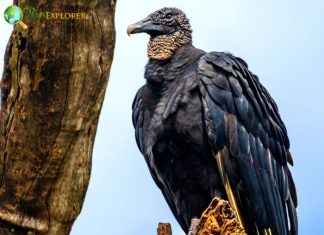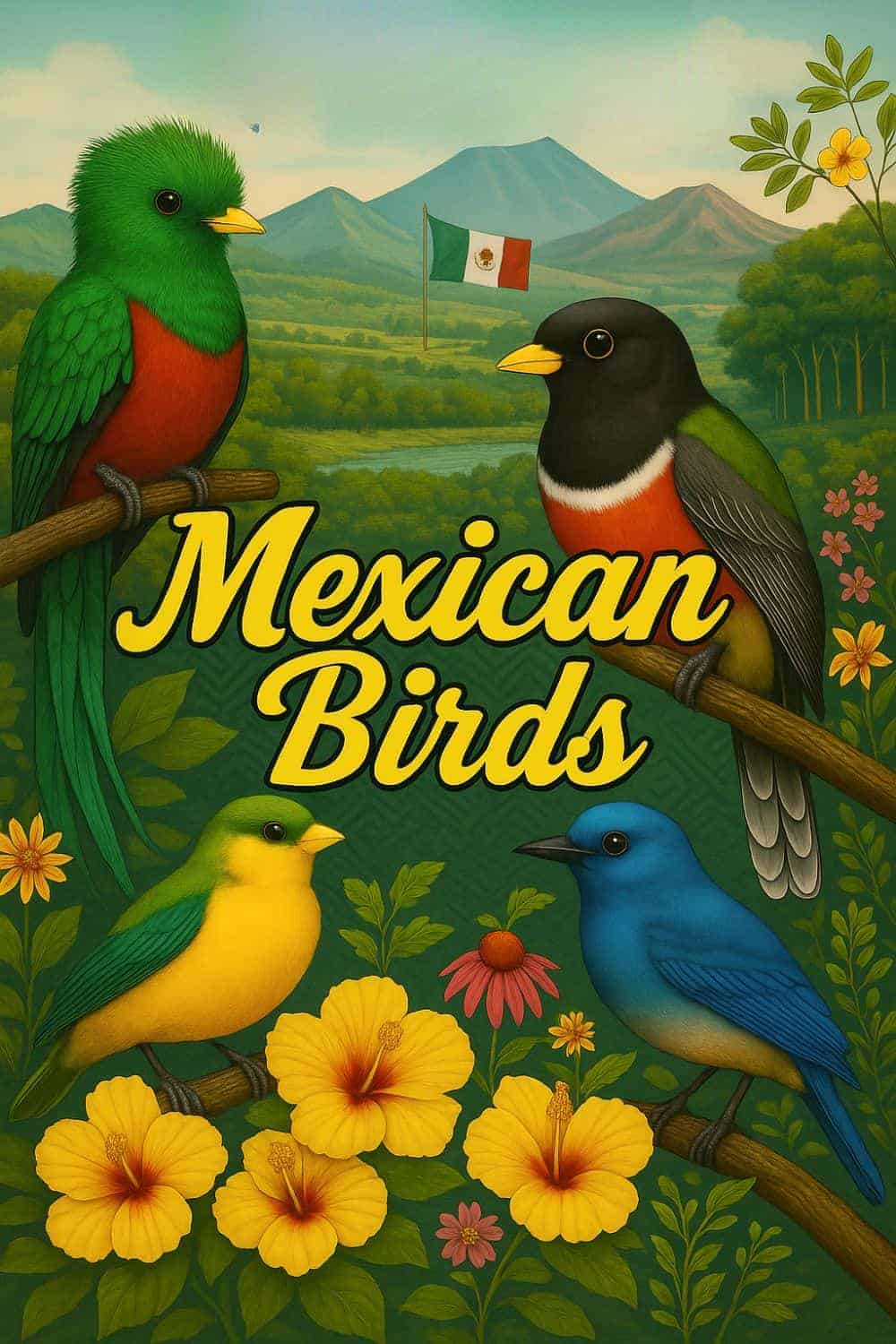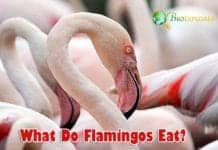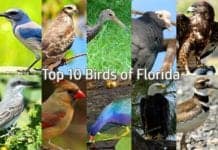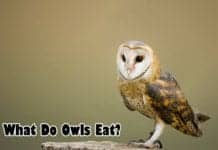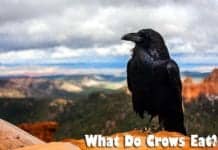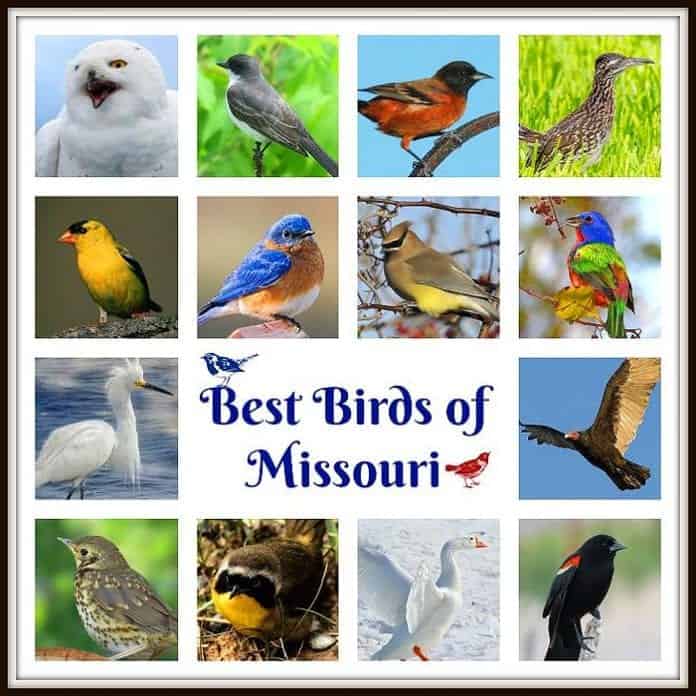
Birds of Missouri: There are 3 major habitats in the state of Missouri, namely the Mark Twain Forest National Park, wetlands, and urban areas. That is why this state has a variety of wading and water birds.
The forests have various raptor and owl species, as well as enchanting songbirds. Some birds have also adapted well to urban living.
Many migratory species stop in Missouri for a quick snack or a long-term stay to produce young. See some of the examples of local variety here.
Birds of Missouri
Here are the top 15 Missouri birds and their fascinating fun facts, along with where to spot each in Missouri.
1. Eastern bluebird (State Bird of Missouri)
| Animalia | Passeriformes | Turdidae | Sialia | Sialia sialis |
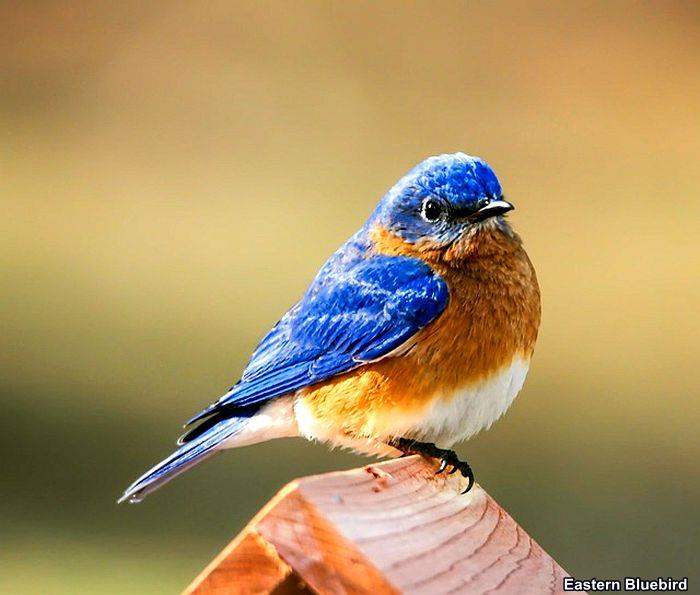 This beautiful small bird of Missouri is so beloved by people that it was proclaimed a state bird both by Missouri and New York.
This beautiful small bird of Missouri is so beloved by people that it was proclaimed a state bird both by Missouri and New York.
- These birds are small, round, with a small head and a short bill.
- The male eastern bluebirds have a bright blue back, head, and wings.
- The chest and throat of the male bluebirds are rusty, and the belly white.
- The female bluebirds have more subdued coloring: the head and back are grey, the wings bluish, and the chest has a less prominent rusty color.
- The legs and tail of the eastern bluebirds are relatively short, while the wings are relatively long compared to their body size.
- These birds like to perch on branches and watch over everything with bright, large eyes.
One can observe bluebirds either along the bluebird trails with nesting boxes or in areas with open grasslands and trees with cavities.
Interesting facts about eastern bluebirds:
- One of the most dangerous enemies of the eastern bluebirds is the house sparrow – it can attack and kill the nesting birds.
- The Eastern bluebirds can be seen in Missouri in winter and warmer months.
- There is an increased need for nesting boxes for bluebirds, as there is a shortage of proper trees with cavities suitable for the nests.
- Eastern bluebirds can live up to 10 years.
- Eastern bluebirds cooperate in defending their nests or nesting boxes against such predators as foxes and sparrows.
![]()
2. Painted bunting
| Animalia | Passeriformes | Cardinalidae | Passerina | Passerina ciris |
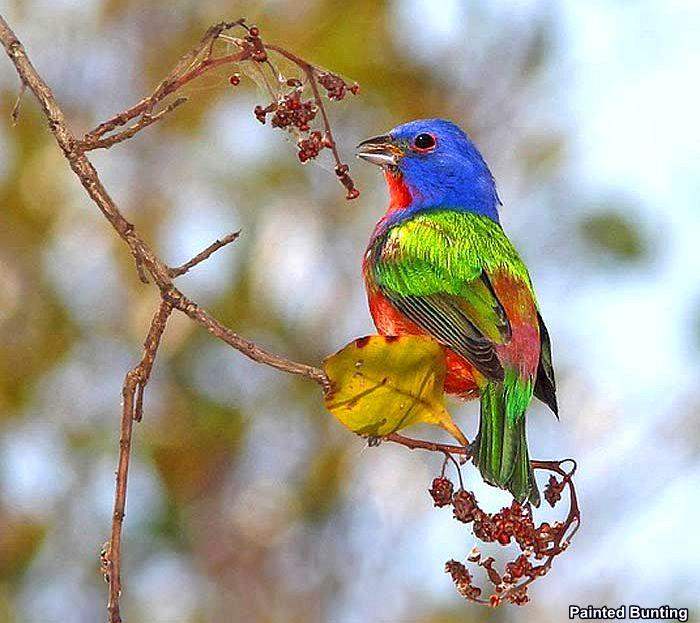 The next Missouri bird in our list is the painted bunting. It is one of the most colorful Missouri birds.
The next Missouri bird in our list is the painted bunting. It is one of the most colorful Missouri birds.
- This songbird is stocky and resembles a finch in size and overall body shape. The painted bunted is considered a rare species, especially in Missouri.
- The most prominent feature of this bunting is the coloring, especially in male birds.
- The male plumage of this bunting combines multiple colors: the head is blue, the back is lemon green, and the belly and rump are red.
- The male buntings also have a bright red eyering visible over the blue feathers.
- The females are less brightly colored: they are yellow-green with a pale ring around the eye.
Interesting facts about painted buntings:
- The painted bunting has a famous nickname in French – “non pareil,” without equal.
- This Missouri bird likes to hide in the dense brush and can be found by its song.
- Painted buntings arrive in Missouri in late April or early May.
- During the breeding season, the painted bunting switches from seeds to insects to get more protein.
- These birds are often victims of illegal trapping.
![]()
3. Cedar waxwing
| Animalia | Passeriformes | Bombycillidae | Bombycilla | Bombycilla cedrorum |
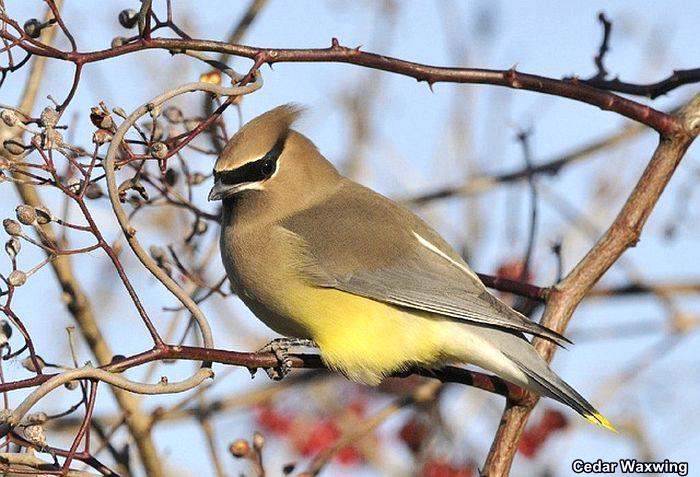 A cedar waxwing is a sleek bird of medium size from Missouri with a large head, short, wide bill, and a short neck.
A cedar waxwing is a sleek bird of medium size from Missouri with a large head, short, wide bill, and a short neck.
- The head and shoulders of the waxwing are brown, and there is a prominent crest on the head.
- There are symmetrical dark stripes around the eyes that come down to the bill underlined with white.
- The back and wings of the cedar waxwing are soft grays.
- The wings of the waxwing are pointed at the end, and there are small red waxy tips on some of the wing feathers.
- The belly of the cedar waxwing is pale yellow.
Interesting facts about cedar waxwings:
- Cedar waxwings eat fruit and berries in winter and switch to insects in summer.
- Cedar waxwing can become intoxicated and die if they overeat overripe fruit.
- These birds are very social and even eat their berries together in flocks.
- Cedar waxwings are essential for seed dissemination, as they eat the whole fruit and then release the seeds with their excrements.
- Cedar waxwings are monogamous and have complicated mating rituals.
![]()
4. Red-winged blackbird
| Animalia | Passeriformes | Icteridae | Agelaius | Agelaius phoeniceus |
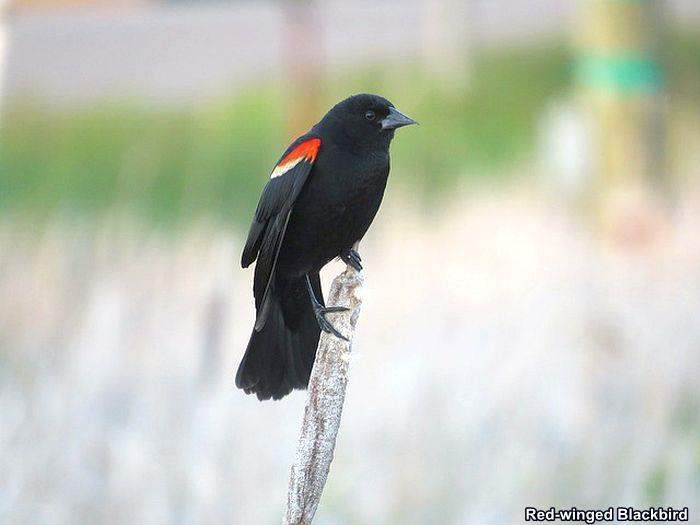 The red-winged blackbird is a stocky Missouri bird with broad shoulders and typical conical bill often seen in blackbirds.
The red-winged blackbird is a stocky Missouri bird with broad shoulders and typical conical bill often seen in blackbirds.
- The males are black overall except for bright red patches on the shoulders with a thin yellow border.
- The females are completely different in coloring – they are brown with prominent streaks.
- The bill of the female red-winged blackbird is a little smaller and has some yellow patches around it.
- The red-winged blackbird is one of the most common blackbirds in Missouri.
- This bird is widespread statewide and prefers wet and marshy areas.
Interesting Facts about Red-winged blackbirds:
- The first description of Agelauis phoeniceus was published by Carl Linnaeus in 1766.
- These birds tend to form huge flocks for migration.
- These birds are very bold and are known to attack bigger birds if they think they threaten the nest.
- The male displays his red shoulder patches when singing.
- One male red-winged blackbird can mate with several female birds.
![]()
5. American Goldfinch
| Animalia | Passeriformes | Fringillidae | Spinus | Spinus tristis |
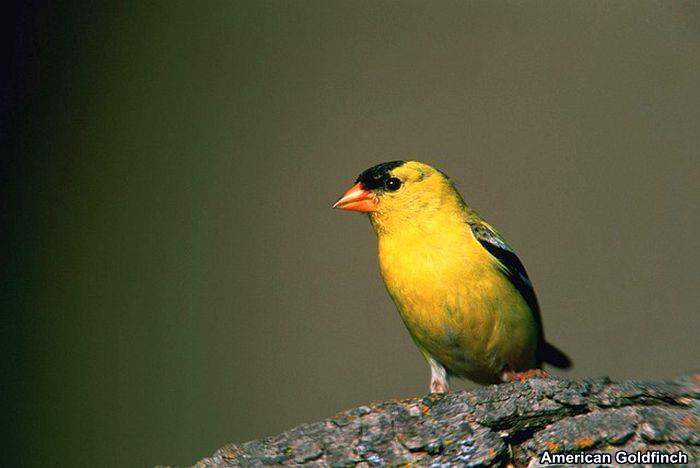 The American Goldfinch is a very bright representative of the finch family of birds from Missouri.
The American Goldfinch is a very bright representative of the finch family of birds from Missouri.
- An American Goldfinch is small, with a short, notched tail and a short conical bill.
- The breeding male goldfinches are overall yellow with a black forehead and black wings with white markings.
- The females are pale green and olive green with black wings.
- Non-breeding males are dull brown with streaked black wings.
Interesting facts about American goldfinches:
- American goldfinch nesting period coincides with the time when thistles form their seeds, as thistles are one of the primary food sources for these birds.
- American goldfinches feed almost exclusively on seeds and even feed half-digested seed pulp to their young.
- The nest of the American goldfinch is so well-made it may hold water.
- American goldfinches have six different types of calls.
- A chick of a parasitic bird such as a cowbird cannot survive in the goldfinch’s nest because of the peculiar diet of this species.
![]()
6. Snowy Egret
| Animalia | Pelecaniformes | Ardeidae | Egretta | Egretta thula |
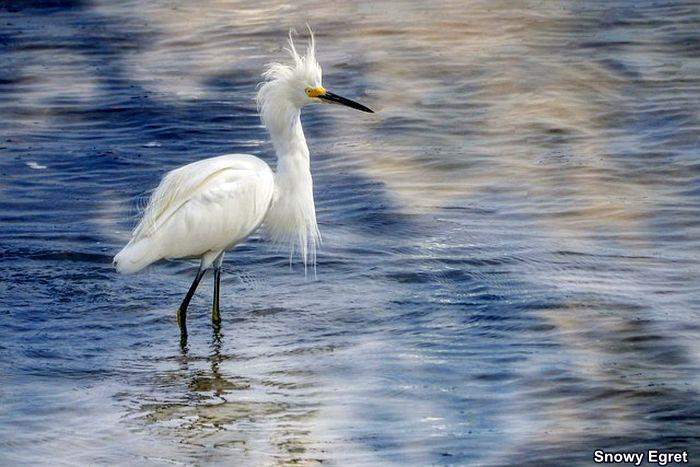 The snowy egret is considered endangered Bird Species in Missouri and is currently protected by law.
The snowy egret is considered endangered Bird Species in Missouri and is currently protected by law.
- The snowy egret is medium size, with a long black bill and bright yellow feet.
- The overall plumage is snow-white, as the name suggests.
- There is a patch of bare yellow skin near the eyes.
Interesting facts about snowy egrets:
- The snowy egret is endangered because it was actively hunted in the 1800s and later because of its beautiful feathers.
- Snowy egrets have different hunting strategies for catching prey. In particular, they may run around shallow waters and muddy them to catch fish or frogs.
- Snowy egrets nest colonially in trees, often with other small herons or egrets.
- The calls of the snowy egret are harsh and loud, entirely unexpected for such a graceful bird.
- It is prohibited to destroy trees, dump waste, and build dams around wetland areas where the snowy egrets are known to feed and roost.
![]()
7. Turkey vulture
| Animalia | accipitriformes | Cathartidae | Cathartes | Cathartes aura |
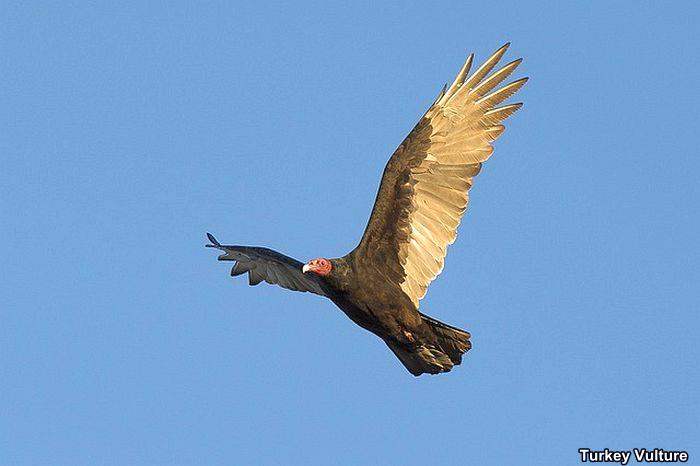 The Turkey vulture is a relatively sizeable predatory bird of Missouri that has long wings.
The Turkey vulture is a relatively sizeable predatory bird of Missouri that has long wings.
- The body of the turkey vulture is dark brown overall, except for the grey flight feathers on the wingtips and tail.
- In the distance, their coloring seems to be black.
- The head of the turkey vulture is bare and red.
- The bill is relatively short, surrounded by the naked red skin, and has a slight curve.
- A turkey vulture spreads its wings wide in flight and makes a “V” shape.
Interesting facts about turkey vultures:
- Turkey vultures feed on dead carcasses and pose little threat to livestock.
- Turkey vultures are forced to migrate in winter because they cannot eat frozen dead meat.
- Turkey vultures may roost near roads because they can find roadkill there.
- Turkey vultures are good at soaring flight and can cross vast distances relatively quickly.
- To keep fresh, turkey vultures pee on their own legs.
Suggested Reading:
Black Vulture
Species Name: Coragyps atratus![]()
8. Snow goose
| Anser caerulescens |
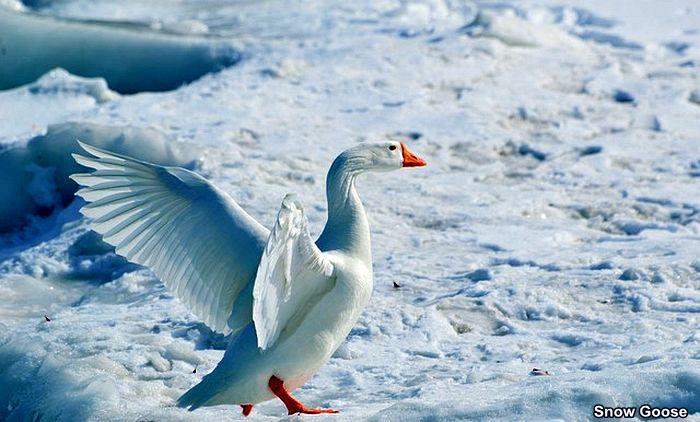 The snow goose is one of the largest geese in the state of Missouri with two color morphs.
The snow goose is one of the largest geese in the state of Missouri with two color morphs.
- The white morph has only one patch of black among the white plumage – hidden black flight feathers.
- The blue goose morph has a sooty gray plumage and a white head.
- These birds have a typical anseriformes bill with a dark line on the underside, sometimes called “black lips.”
- It is currently allowed to hunt snow geese.
Interesting Facts about Snow Geese:
- The white and blue morphs of the Snow goose were previously thought different species.
- The Snow Goose has two subspecies: greater and lesser snow goose.
- In 1916, the populations of snow geese were so low because of hunting that it was prohibited to kill them until 1975.
- At present, the populations of Snow Geese and Ross Geese are so vast; they are endangering other species and overgrazing their feeding areas in the Arctic.
- Snow geese are an essential food source for bald and golden eagles during winter.
![]()
9. Wood thrush
| Animalia | Passeriformes | Turdidae | Hylocichla | Hylocichla mustelina |
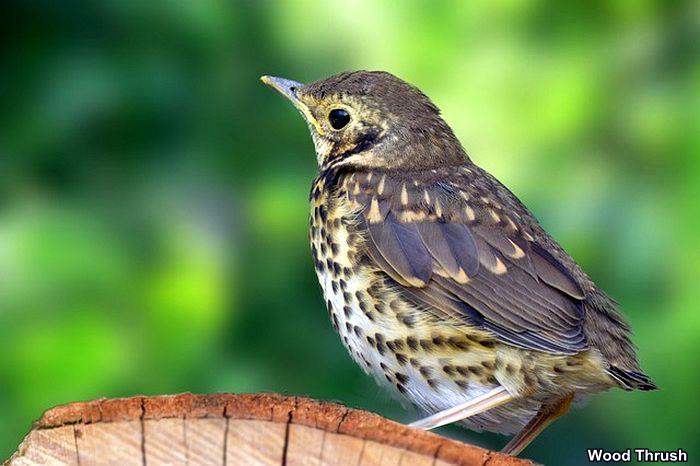
The wood thrush is a bird from Missouri of medium size with a prominent “potbelly.”
- It has a small yellow bill and short legs. This thrush has a typical “upright” posture.
- The head of the wood thrush is relatively big compared to the body size.
- This bird has camouflage coloring – the upper parts are reddish-brown, and the belly and chest are white, with prominent black spots.
- There are noticeable white eyerings around the big, round eyes.
Interesting facts about wood thrushes:
- A wood thrush is a reclusive bird that can usually be heard or unseen.
- A wood thrush is an “indicator species” – its population is the first to be affected in the area, for example, by the destruction of habitats.
- An American poet and philosopher, Henry David Thoreau, has called the wood thrush’s song inspiring and exhilarating.
- This species is crucial in the ecosystem: they eat many invertebrates, controlling their populations, and both the birds and their eggs are food for multiple predators.
- Wood thrushes spend the winter in Central America, and they fly there at night, using Earth’s magnetic field and stars for orientation.
![]()
10. Greater Roadrunner
| Animalia | Cuculiformes | Cuculidae | Geococcyx | Geococcyx californianus |
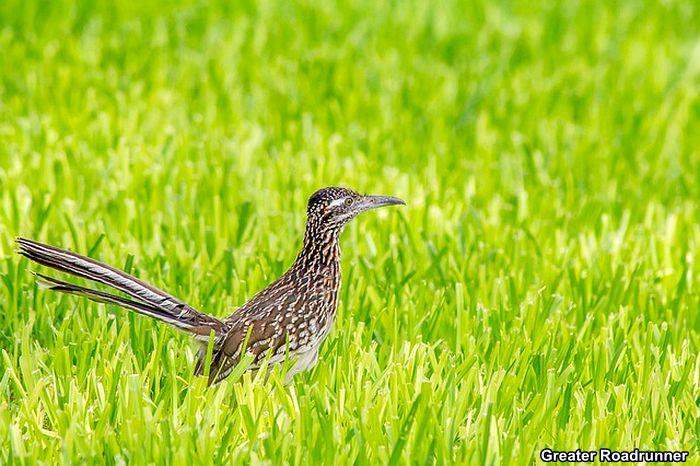
A greater roadrunner is a slender bird of Missouri with a long neck, long legs, and a typical crest on the head.
- The greater roadrunner also has a very long tail.
- The coloring of this bird is mostly brown with long stripes along the body.
- The belly is lighter in color and usually without stripes.
- During the breeding season, male roadrunners can get bright red and blue spots on the head.
Interesting facts about greater roadrunners:
- If you think that the roadrunner seems familiar – you may have watched Warner Brother’s cartoons!
- The roadrunner belongs to the cuckoo family and is sometimes called the earth-cuckoo.
- The roadrunner can sprint up to 46 km per hour. This achievement is the highest speed for the birds capable of flight.
- The roadrunners are so quick they can even catch hummingbirds.
- Roadrunners get the moisture they need to survive in the desert from the blood of their prey.
![]()
11. Eastern kingbird
| Animalia | Passeriformes | Tyrannidae | Tyrannus | Tyrannus tyrannus |
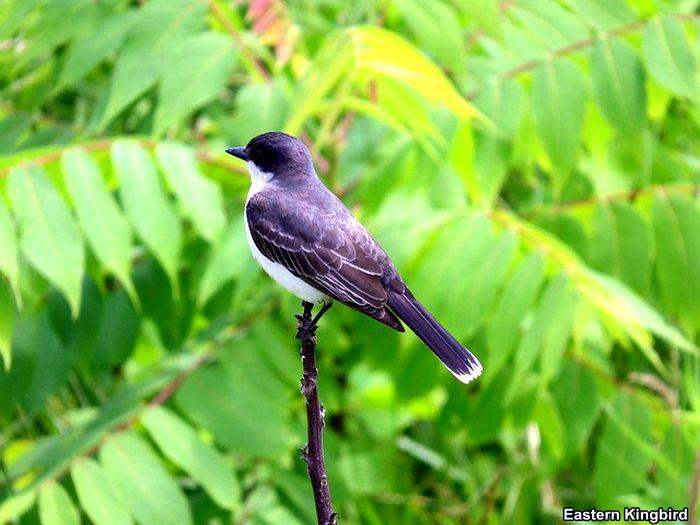
The eastern kingbird is a flycatcher of the genus Tyrannus. This Missouri bird is relatively small but with a large head.
- The coloring is grey overall, while the head is almost black.
- Another distinct feature of this species is a white tip on the tail.
- The belly of the eastern kingbird is white.
Interesting facts about eastern kingbirds:
- Eastern kingbirds are visual hunters, catching flying insects in motion.
- Eastern kingbirds prefer open spaces for breeding – from yards to lakes, parks, and grasslands.
- In ancient times, this bird was thought to have preyed on honeybees.
- The eastern kingbirds are an important part of the ecosystem: in North America, they control the insect populations, while in South America, they also feed on berries and help disseminate seeds.
- Eastern kingbirds can use different unique materials for nest-building, including human trash.
![]()
12. Snowy owl
| Animalia | Strigiformes | Strigidae | Bubo | Bubo scandiacus |
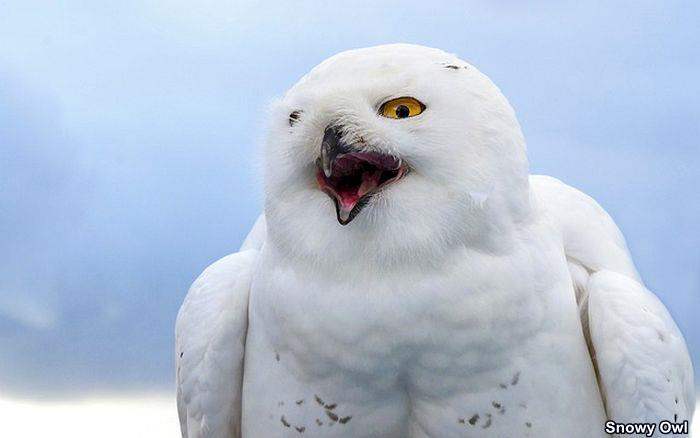
The snowy owl is one of the largest birds in Missouri with bright yellow eyes. The plumage is usually white, sometimes with scattered brown spots.
- Female and immature male owls may have dark barring on their white feathers.
- The face is purely white in both sexes.
- The head of this owl species is rounded, and there are no ear tufts.
- Another typical feature of the snowy owl is the thick tufts of white feathers on the legs, probably for protection against the cold.
Interesting facts about snowy owls:
- As a rule, snowy owls reside in the Arctic and Northern Canada, and their main food source is lemmings. If too many new young owls and few lemmings exist, the snowy owls migrate further south, including Missouri State.
- The snowy owl does not build complicated nests: the eggs are laid into an indentation on the ground like a small bowl.
- The snowy owl has become famous after being featured as Harry Potter’s pet in the famous series of the same name.
- Snowy owls are essential for the control of small mammals‘ populations.
- There is a theory that both lemming and snowy owl populations are in decline due to climate change.
![]()
13. Orchard oriole
| Animalia | Passeriformes | Icteridae | Icterus | Icterus spurius |
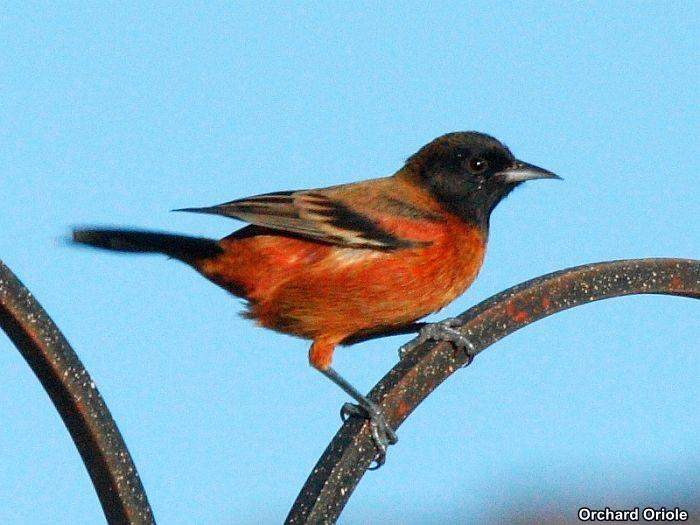
The orchard oriole is the smallest in North America. This bird looks slim, with a long, pointed tail.
- It also has the darkest coloring among orioles: the back and head of the male orchard oriole are dark black, while the belly and chest are chestnut brown.
- There is also a chestnut-colored patch on the wings of this oriole.
- The female orchard oriole is yellow-green, with darker wings and two white bars.
- Immature males resemble females in color and have black throats.
- Both sexes have a typical sharply pointed bill.
- Orchard oriole is common statewide.
Interesting facts about orchard orioles:
- Orchard oriole has co-evolved with a plant called coral bean tree and assists with its pollination.
- Orchard orioles migrate north for insects that they feed their young.
- They can be fed orange slices or jelly from the unique feeders people install for orioles.
- Orchard orioles like to nest near the water, and sometimes several birds would make nests on the same tree.
- Orchard orioles have a very short breeding season: they move north in late spring and return South in mid-July.
![]()
14. Common yellowthroat
| Animalia | Passeriformes | Parulidae | Geothlypis | Geothlypis trichas |
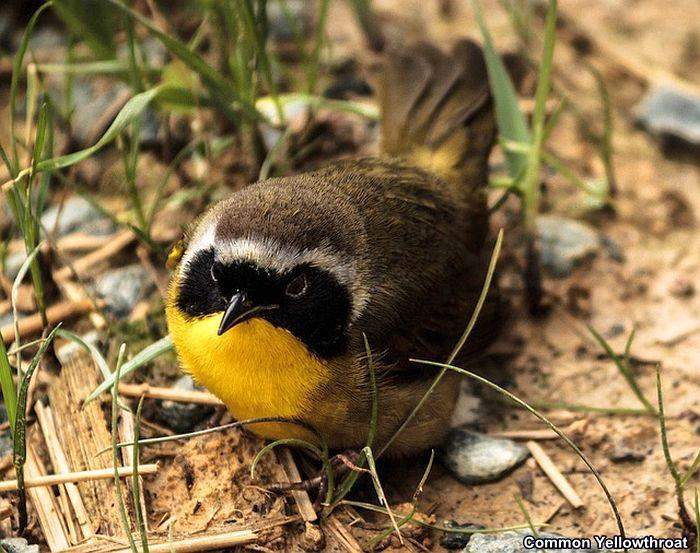
The next Missouri bird is the common yellowthroat, and it is also a songbird. This bird is small and has a round belly and a long tail.
- Male yellowthroats have overall olive-green plumage with a yellow throat.
- A distinct white stripe offsets The head mask from the back.
- The area around the bill and eyes is black.
- Females of the species are olive-brown with a yellow throat.
- Common yellowthroats are wetland birds.
Interesting facts about common yellowthroats:
- The common yellowthroat is among the first species from the New World described by Linnaeus.
- Common yellowthroats can eat up to thousand of mosquitoes a day.
- Sometimes, yellowthroats are found in the bellies of carnivorous fish like pike and bass.
- One can attract migrating yellowthroats by putting dried insects in the backyard.
- Yellowthroats can detect when a parasitic cowbird lays an egg into their nests and abandon the infected nest (or build a new one above the old one).
![]()
15. Black-chinned hummingbird
| Animalia | Apodiformes | Trochilidae | Archilochus | Archilochus alexandri |
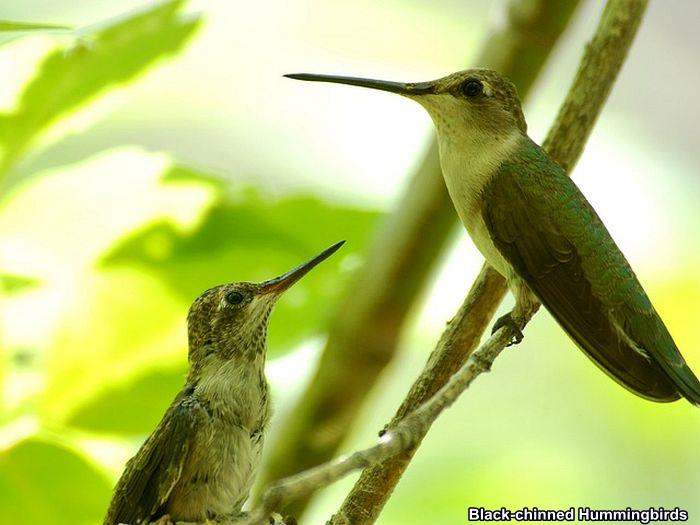
The last but not the least bird of Missouri in our list is a beautiful hummingbird with a long and slender body.
- This hummingbird has metallic green upperparts and a belly with gray and white feathers.
- The bill of the black-chinned hummingbird is thin, straight, and long.
- The throat and chin of the male black-chinned hummingbird have iridescent velvet black feathers.
- There is a purple band below this black patch.
- The female black-chinned hummingbirds have metallic green backs, heads, and wings.
- The tail of the female hummingbirds of this species has three broad feathers with white tips.
- The belly and throat are whitish.
- This hummingbird is migratory and is an occasional vagrant in Missouri.
- It can be attracted to hummingbird feeders in the backyard during the hummingbird migration season.
Interesting facts about black-chinned hummingbirds:
- This hummingbird is highly adaptable and can be seen in various habitats, from semi-deserts to urban parks with high trees.
- The most favorite flowers of black-chinned hummingbirds are Tree Tobacco, Scarlet Larkspur, and Desert Ocotillo.
- Black-throated hummingbirds are highly territorial and chase away both birds and bees alike.
- Males of this species are polygamous and mate with multiple females. They do not participate in nest building or caring for the young.
- The nest of the black-chinned hummingbird is made of spider nets and plants down and can expand as the chicks grow.
![]()
Many Missouri birds, such as nest boxes and feeders, require citizen support. Even if the birds do not need direct help such as food and housing, simple rules such as responsible hunting and waste disposal can go a long way to protect many of Missouri’s feathered residents.
![]()


